| JANUARY: CARNATION Representing pride, beauty, admiration and gratitude, the carnation’s multilayered, feathery soft petals conceal a hardy core – an appropriate paradox for this first-month-of-the-year flower. Originally from Asia, where they’ve been cultivated for the last 2,000 years, today this winter birth flower is a richly colorful and fragrant gem. |  |
| FEBRUARY: IRIS It should come as no surprise that the iris's three upright petals symbolize faith, valor and wisdom. With its majestic purple hues and soaring slender stem, this dignified and graceful February birth flower dates back to Ancient Greece, when Iris, the messenger of the gods and the personification of the rainbow (the Greek word for Iris), acted as the link between heaven and earth. |  |
| MARCH: DAFFODIL When the bright yellow daffodil pokes through late winter's ground, it's like a long-awaited friend returning home – a birth flower anyone would be proud to call their own. Symbolizing rebirth and new beginnings, particularly when presented in an abundant bouquet, daffodils promise happiness and joy. | 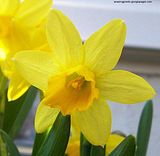 |
| APRIL: DAISY Legend has it that the daisy originated from a nymph who transformed herself into a charming but unassuming wildflower to escape unwanted attention. Epitomizing childlike joy and playfulness, this April birth flower captures the essence of spring’s happy-go-lucky, forever-young attitude. |  |
| MAY: LILY Lilies were so revered by the ancient Greeks that they believed they sprouted from the milk of Hera, the queen of the gods. Long tied to the Virgin Mary, the white Madonna lily represents virtue, while the lily of the valley conveys sweetness and humility. In the language of flowers, this May birth flower expresses purity of heart, majesty and honor. | 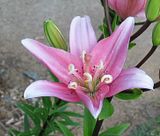 |
| JUNE: ROSE Long a symbol of love and passion, the rose is rich with history and meaning. Aphrodite, the Greek goddess of love, presented a rose to Eros, and Cleopatra lured Mark Antony with a room knee-deep in rose petals. Though each color offers a distinct meaning – and the number of stems offers a singular message – this June birth flower signifies beauty and perfection. |  |
| JULY: DELPHINIUM With its lush, dolphin-shaped flowers, the aptly named delphinium – or larkspur – symbolizes an open heart and ardent attachment. Also signifying a feeling of lightness and levity, the gentle hues and refreshing fragrance of this summer birth flower give it a refreshing and distinctive natural beauty. | 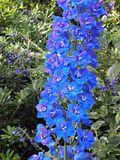 |
| AUGUST: GLADIOLA Gladiola, the August birth flower, represents strength and moral integrity – not surprising when you consider that its name comes from the Latin word for sword, “gladius.” But while its sword-shaped stems may imply Roman gladiators, its romantic flowers are capable of piercing a heart with their beauty – explaining why infatuation is another one of its meanings as well. | 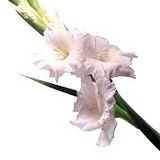 |
| SEPTEMBER: ASTER With their lush texture, rich hues and wildflower beauty, it's easy to see why asters have had a long association with magical powers. In ancient times, it was believed that when aster leaves burned, their perfume could drive away evil. Today, this autumn birth flower is known as a talisman of love and an enduring symbol of elegance. | 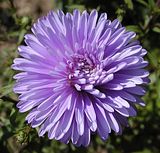 |
| OCTOBER: MARIGOLD With their rich, autumn-colored hues, marigolds are the quintessential October birth flower. Early Christians called marigolds Mary’s Gold, and placed it by statues of the Virgin Mary. Brilliant and colorful, with a late-harvest warmth and a broad open bloom, marigolds signify affection and grace. |  |
| NOVEMBER: CHRYSANTHEMUM Chrysanthemums, a symbol of the sun, have held many noble positions in ancient cultures. The Japanese consider the orderly unfolding of their petals to represent perfection, and Confucius suggested they be used as an object of meditation. Signifying optimism and happiness, it’s said that a single petal of this November birth flower placed at the bottom of a wine glass will encourage a long and healthy life. |  |
| DECEMBER: POINSETTIA Also known as the Christmas flower, legend has it that poinsettias began as a humble weed. When a little girl – with no means for a grander gift – placed weeds on a church alter, they turned into brilliant red blooms. Symbolizing good cheer and merriment, this December birth flower is a fitting tribute to December’s joyful celebrations. |  |
skip to main |
skip to sidebar
Lilies, tulips, sunflowers:
1 = $10
3 = $30
6 = $55
9 = $70
12 = $90
Collection / Delivery charges







We provide 24 hrs delivery
*see delivery charges below*
About Me
- Ginger
- Email: ginger_propnex@yahoo.com Contact: Ginger @ +65 96916996
Prices
Roses Colours:
Red, Pink, Yellow, Champange, White.
1 = $8
3 = $20
6 = $35
9 = $42
12 = $50
24 = $90
36 = $130
99 = $240
1 = $8
3 = $20
6 = $35
9 = $42
12 = $50
24 = $90
36 = $130
99 = $240
Lilies, tulips, sunflowers:
1 = $10
3 = $30
6 = $55
9 = $70
12 = $90
Collection / Delivery charges
[time : 9am - 11pm]
east, central = $5
north, south, west = $10
CBD/ERP areas = $12
[time : 12am to 8am]
additional $10 from above delivery charges
(no delivery to below areas)
- Airport Cargo Complex
- Army Camps
- Jurong Island
- All PSA Ports
- Sentosa
- Army Camps
- Jurong Island
- All PSA Ports
- Sentosa
Flowers Samples






